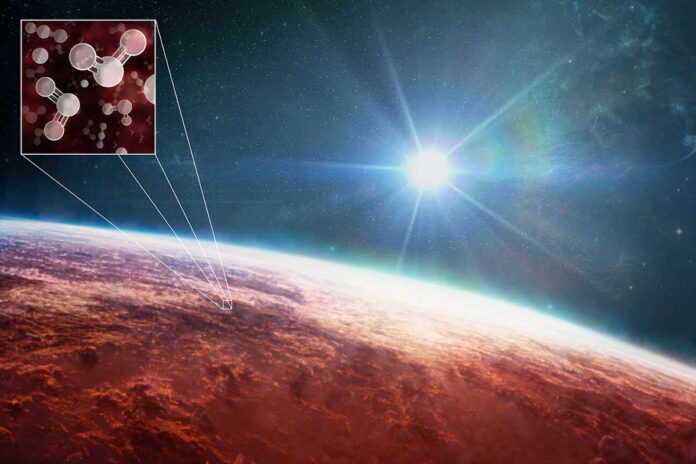NASA’s space telescope has created a molecular and chemical portrait of exoplanet WASP-39 b’s atmospheric constituents. It is a Saturn-sized giant orbiting a star 700 light-years away. The observations include atoms and molecules, as well as evidence of active chemistry and clouds. The discoveries are detailed in a series of five scientific papers published by an international collaboration that includes research staff from the Instituto de Astrofsica de Canarias (IAC).
WASP-39 b is unlike any other planet in our solar system. It’s a “hot Saturn”. A planet roughly the size of Saturn but in an orbit tighter than Mercury, orbiting a star 700 light-years away. When NASA’s James Webb Space Telescope began regular science operations, this exoplanet was one of the first to be studied. The findings have piqued the interest of the exoplanet science community.
Webb’s exquisitely sensitive instruments created a profile of WASP-39 b’s atmospheric constituents. It identified a wide range of contents, including water, sulphur dioxide, carbon monoxide, sodium, and potassium. The data also point to the presence of fragmented clouds rather than a single, uniform mantle over the planet.
Among the ground-breaking discoveries is the first detection of sulphur dioxide (SO2) in an exoplanet atmosphere. It is a molecule produced by chemical reactions triggered by high-energy light from the planet’s parent star. On Earth, a similar process produces the protective ozone layer in the upper atmosphere.
Webb tracked WASP-39 b as it passed in front of its star. It allowed some of the star’s light to filter through the planet’s atmosphere. Because different types of chemicals in the atmosphere absorb different colours of the starlight spectrum. The colours that are absent indicate which molecules are present. Webb can detect chemical fingerprints that are invisible in visible light by viewing the universe in infrared light.
Other atmospheric constituents detected by the Webb telescope include sodium (Na), potassium (K), and water vapour (H2O). It confirmed previous space- and ground-based telescope observations while also discovering new water fingerprints at these longer wavelengths. Webb also observed carbon dioxide (CO2) at a higher resolution, providing twice as much data as previously reported. Meanwhile, carbon monoxide (CO) was detected. But there were no obvious signatures of methane (CH4) or hydrogen sulphide (H2S) in the Webb data. These molecules are present at very low levels if they exist at all.
Having such a comprehensive list of chemical constituents in an exoplanet atmosphere allows scientists to gain insight into the abundance of various elements in relation to one another. Such as carbon-to-oxygen or potassium-to-oxygen ratios. This, in turn, sheds light on how this planet. And possibly others – formed from the disc of gas and dust that surrounded the parent star in its early years. The chemical composition of WASP-39 b suggests a history of collisions and mergers of smaller bodies. It is known as planetesimals to form an eventual goliath of a planet.

